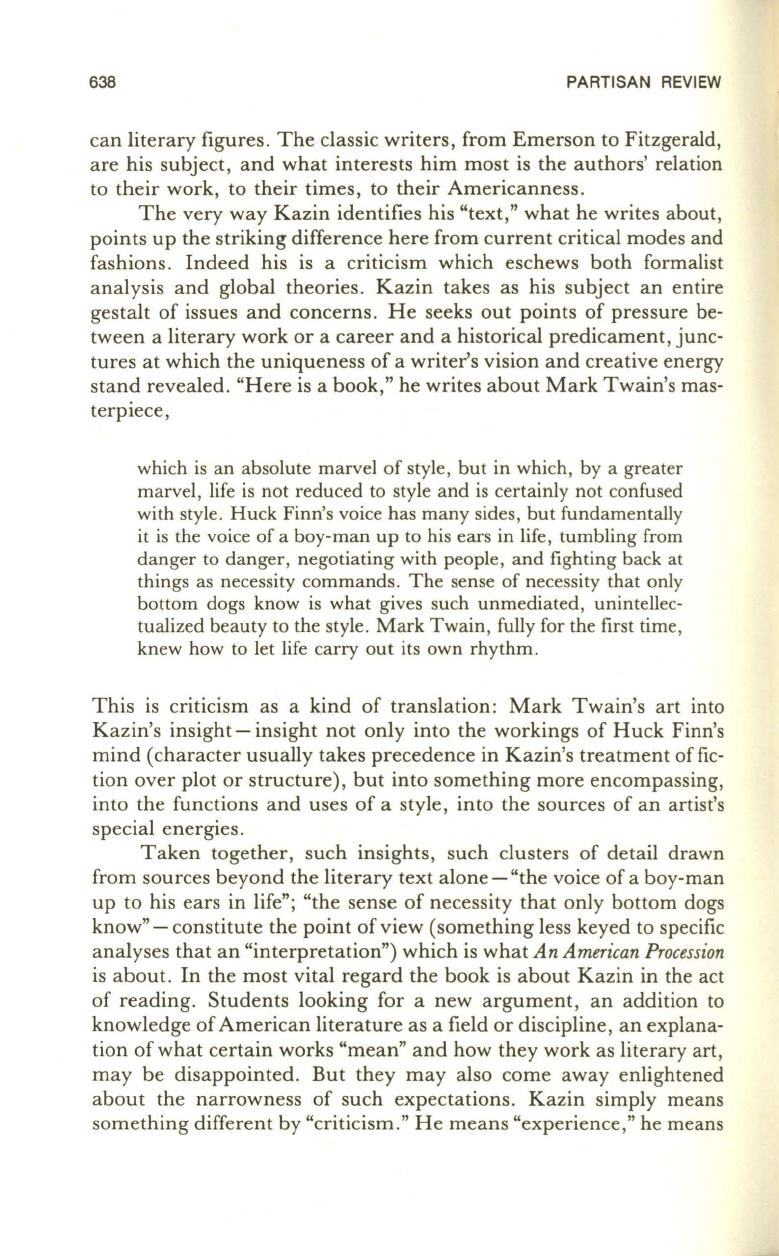
638
PARTISAN REVIEW
can literary figures. The classic writers, from Emerson to Fitzgerald,
are his subject, and what interests him most is the authors' relation
to their work, to their times, to their Americanness.
The very way Kazin identifies his "text," what he writes about,
points up the striking difference here from current critical modes and
fashions. Indeed his is a criticism which eschews both formalist
analysis and global theories. Kazin takes as his subject an entire
gestalt of issues and concerns. He seeks out points of pressure be–
tween a literary work or a career and a historical predicament, junc–
tures at which the uniqueness of a writer's vision and creative energy
stand revealed. "Here is a book," he writes about Mark Twain's mas–
terpiece,
which is an absolute marvel of style, but in which, by a greater
marvel, life is not reduced to style and is certainly not confused
with style. Huck Finn's voice has many sides, but fundamentally
it is the voice of a boy-man up to his ears in life, tumbling from
danger to danger, negotiating with people, and fighting back at
things as necessity commands. The sense of necessity that only
bottom dogs know is what gives such unmediated, unintellec–
tualized beauty to the style. Mark Twain, fully for the first time,
knew how to let life carry out its own rhythm.
This is criticism as a kind of translation: Mark Twain's art into
Kazin's insight - insight not only into the workings of Huck Finn's
mind (character usually takes precedence in Kazin's treatment of fic–
tion over plot or structure), but into something more encompassing,
into the functions and uses of a style, into the sources of an artist's
special energies.
Taken together, such insights, such clusters of detail drawn
from sources beyond the literary text alone - "the voice of a boy-man
up to his ears in life"; "the sense of necessity that only bottom dogs
know"-constitute the point of view (something less keyed to specific
analyses that an "interpretation") which is what
An American Procession
is about. In the most vital regard the book is about Kazin in the act
of reading. Students looking for a new argument, an addition to
knowledge of American literature as a field or discipline, an explana–
tion of what certain works "mean" and how they work as literary art,
may be disappointed. But they may also come away enlightened
about the narrowness of such expectations. Kazin simply means
something different by "criticism." He means "experience," he means


